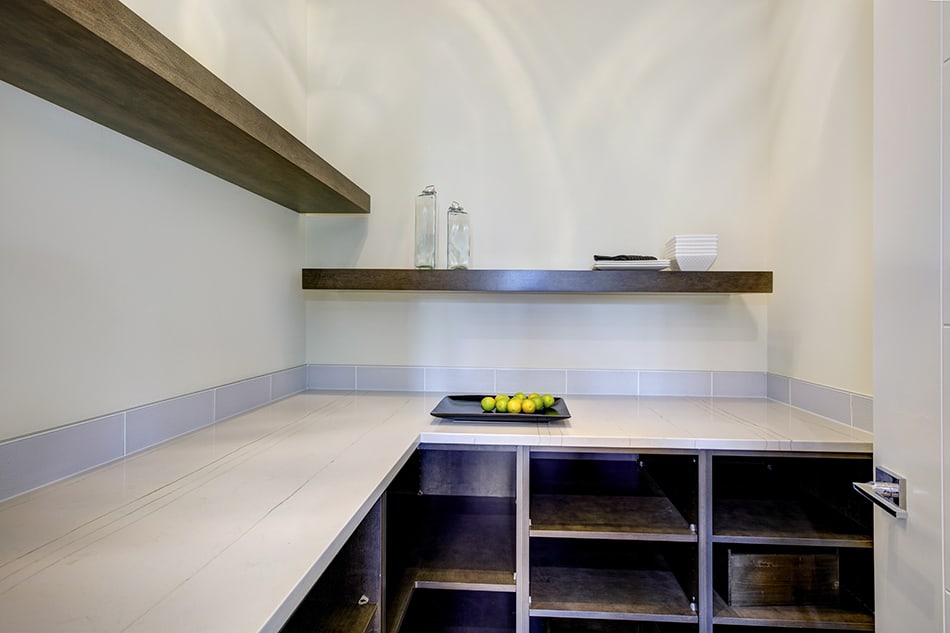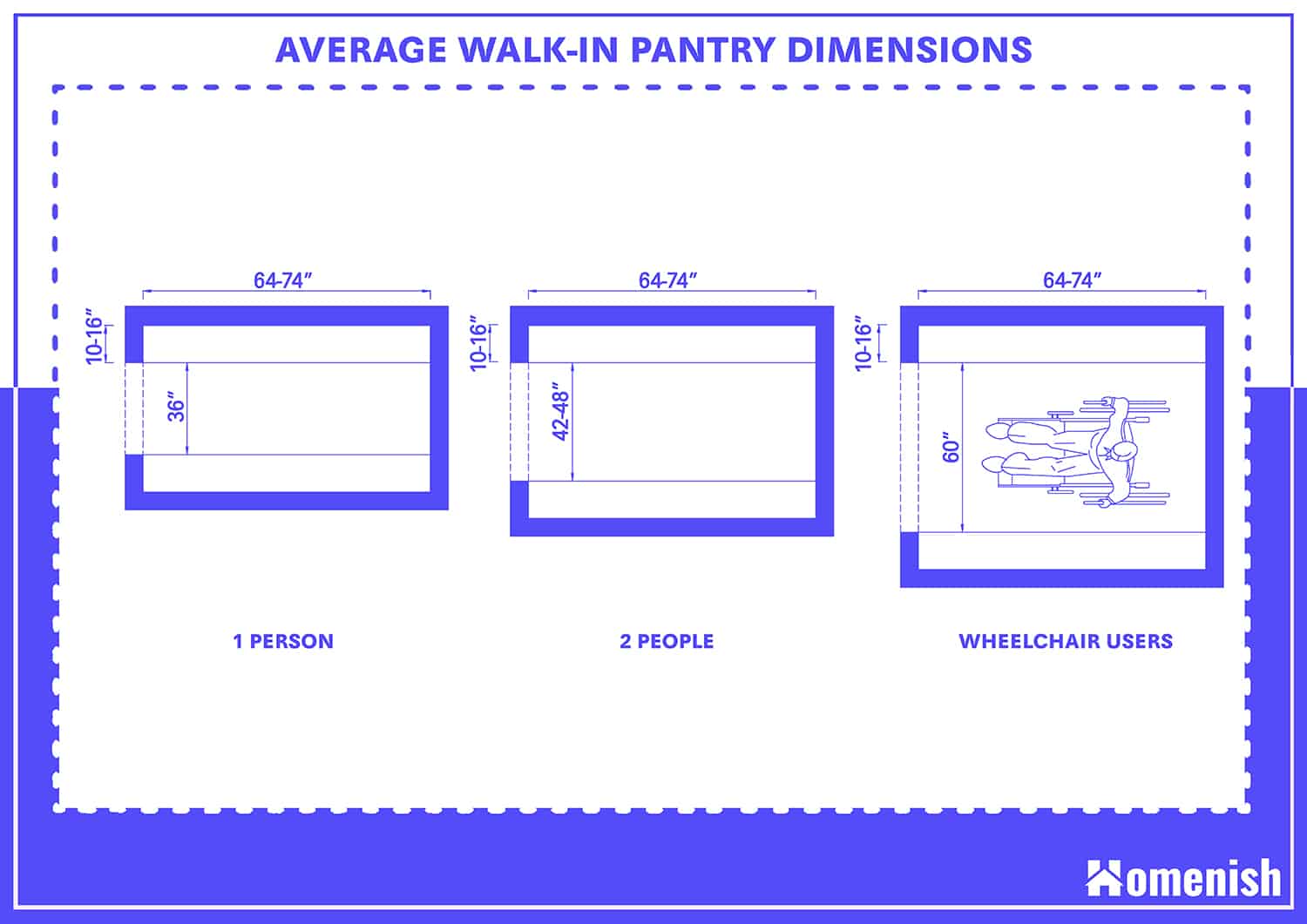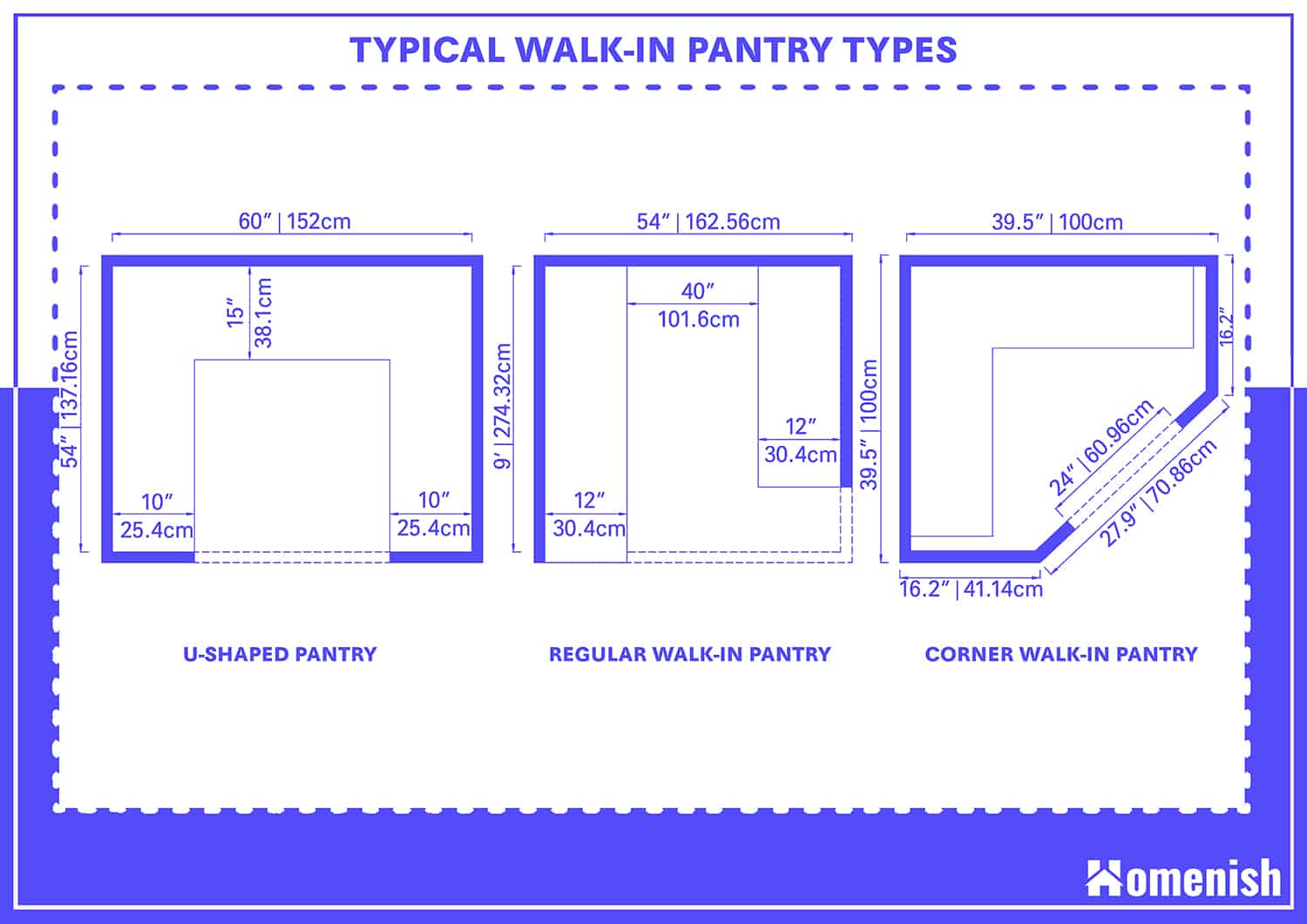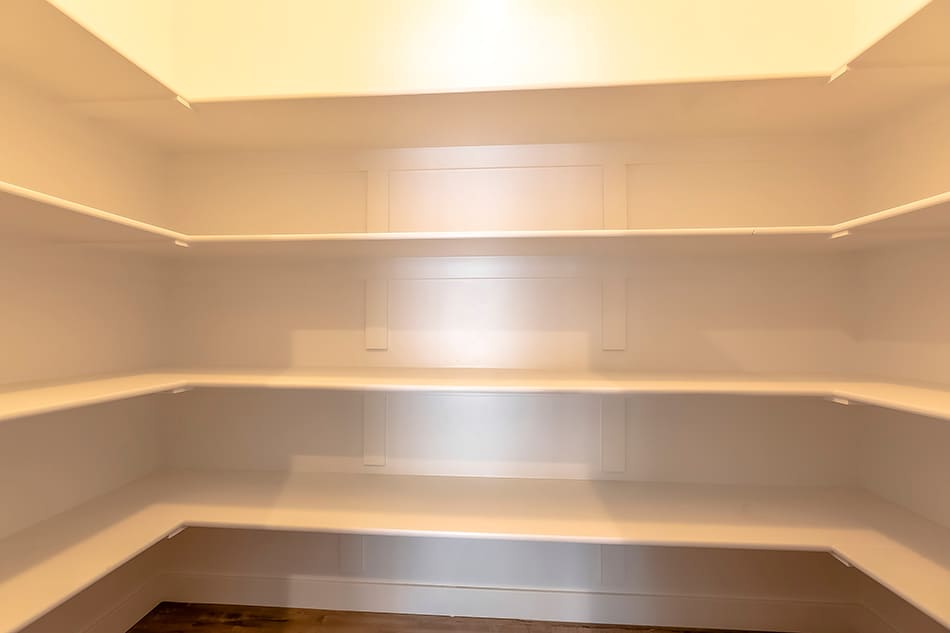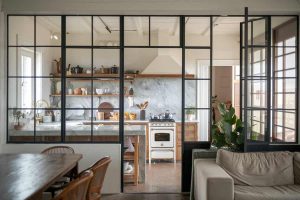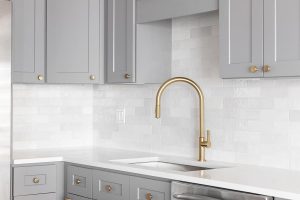Walk-in pantries have become an essential addition to the modern home. Pantries have grown a lot more popular than cabinet pantries in recent years. Today, almost every modern kitchen has a room exclusively dedicated to the storage of cereals and dry foodstuff.
A modern pantry ensures that the kitchen remains uncluttered as the pantry provides centralized storage for all food items. A walk-in pantry ensures all ingredients stay in a separate room from the kitchen, keeping the space in the kitchen clutter-free at all times. A separate pantry creates some additional space for you to store your kitchenware. It also creates the benefit of additional counter space.
One of the most interesting things about pantries is that they’re pretty easy to add to the layout of a house. If you’re living in a home without a walk-in pantry, you can create one quite simply if the dimensions of your kitchen will allow it.
All you need to do is take proper measurements and make sure you stick to these measurements while building your pantry. This begs the question, what are pantry dimensions?
What are the Walk-In Pantry Dimensions?
For a pantry to be considered a walk-in, you must leave sufficient clear space in between the storage areas and the shelves so that anyone can go in and out of the space without much stress. If you want your pantry to have enough space for one person at a time, measure the unobstructed walkway to be 36 inches; however, if you want the space to take up to two people simultaneously, measure it to be 42-48 inches.
Regular pantry dimensions should be determined by how many people you think would be using the kitchen simultaneously. For instance, if you’re building a house that’s going to be occupied by just one person, then you could use the 36-inch measurement for the pantry; however, if there’s a chance there would be more people, use the larger dimensions. Pantries for wheelchair users require a space of at least 60 inches to guarantee their access.
The depth of pantry shelves ideally measures 14 -16 inches. Any shelf that extends deeper than this makes it difficult for anyone to pick up items at the back of the shelves. For a shelf to measure 14-16 inches, the depth or width of the pantry has to be anywhere from 64-74 inches. This is necessary if you are going to be installing shelves on the opposite sides of the pantry walls. Wheelchair users will need a pantry depth of 88 inches.
In any type of walk-in pantry, it is advised that you place the shelves closer to eye level so that all items on the shelves are easier to see and reach. If, for any reason, your shelves are out of eye level, then make sure that they don’t go any deeper than 14 inches.
If there are shelves that are even higher than this, then measure them to be 12 inches and 10 inches. Respectfully, never measure shelves to measure less than 10 inches, except the shelves are dedicated solely to storing small items such as spices, cans, and other tiny bottles. In such cases, the shelves may be 6 inches deep.
When building pantry shelves, ensure that you keep the vertical spaces between two shelves as small as possible. On the other hand, if you are building shelves to hold big objects, then try to keep the shelves 16-18 inches apart from each other. Finally, if your shelves are for general storage, keep them 12-14 inches apart.
Types of Walk-in Pantries and Their Dimensions
Below are our design and suggested dimensions for various types of walk-in pantries, including U-shaped pantries, regular pantries, and corner walk-in pantries.
U-shaped pantry
A U-shaped pantry will occupy more space than your average, but it undoubtedly provides the most storage.
When you walk into a U-shaped pantry, you will be surrounded by shelving storage on three sides, which create the shape of a ‘U.’ To build a typical U-shaped pantry, you will need a floor space measuring around 5 feet by 4 feet.
Regular pantry
A regular walk-in pantry typically has shelving on two opposite sides in a galley style. These pantries require slightly less space than a U-shaped pantry, yet they still offer excellent storage.
You can organize shelves from floor level right up to the ceiling to create even more storage, with lesser-used items being stored at the top of the space. A regular pantry will need around 4 feet of width space and can be anywhere from 3 feet to 9 feet in length.
Corner pantry
A corner pantry is a great solution if you don’t want to lose too much of your kitchen when creating a pantry. This type of pantry can be installed in a lesser-used corner of the room, with a door fixed at a diagonal to the rest of the space.
Shelving will be organized in the corner across two walls. You can create a corner pantry in the corner of a kitchen measuring as little as 3 feet by 3 feet, though, of course, this pantry dimension can be made larger if you have enough space.
Why Add a Walk-in Pantry to the Kitchen?
Walk-in pantries are valuable for the following reasons:
Easy access
You can arrange everything in your pantry so well that you can easily reach and pull any item of your choice without having to get any other items out of the way. You can put items back exactly where you took them out from without having to rearrange anything in the end.
Convenience
Most pantries are located inside the kitchen or close to the kitchen. This means you can enjoy the double benefit of having a kitchen that’s not often cluttered with foodstuff and unnecessary cookware while also having your foodstuff and cookware an arm’s length away.
Aesthetically pleasing
Compared to other rooms, pantries are such tiny areas of the house that they’re oftentimes overlooked. Other times, people toss stuff into their pantries until the small room gets overrun with cereals, pasta, spices, and cookware.
However, when done right, pantries can be one of the home’s most efficient, aesthetically pleasing, and user-friendly areas. There’s something very aesthetically pleasing about a pantry that’s well arranged, with every item in perfect symmetry.
Rules for Storing Items in a Walk-in Pantry
Following a few hard and fast rules can make your life considerably easier when using your pantry.
First, build your shelves so they’re just deep enough to carry one row of stuff, and make them just high enough to see what you’re looking for on the shelves without climbing. Bear in mind that in the future, if you need more storage space, you can always change the heights of the shelves or adjust them in any manner you deem fit.
However, aim for immediate visibility to make things a lot easier for anyone using the pantry. Arrange items on the shelves so that nothing needs to be moved out of the way to reach something else. Every item should be placed in one clear, straight line.
